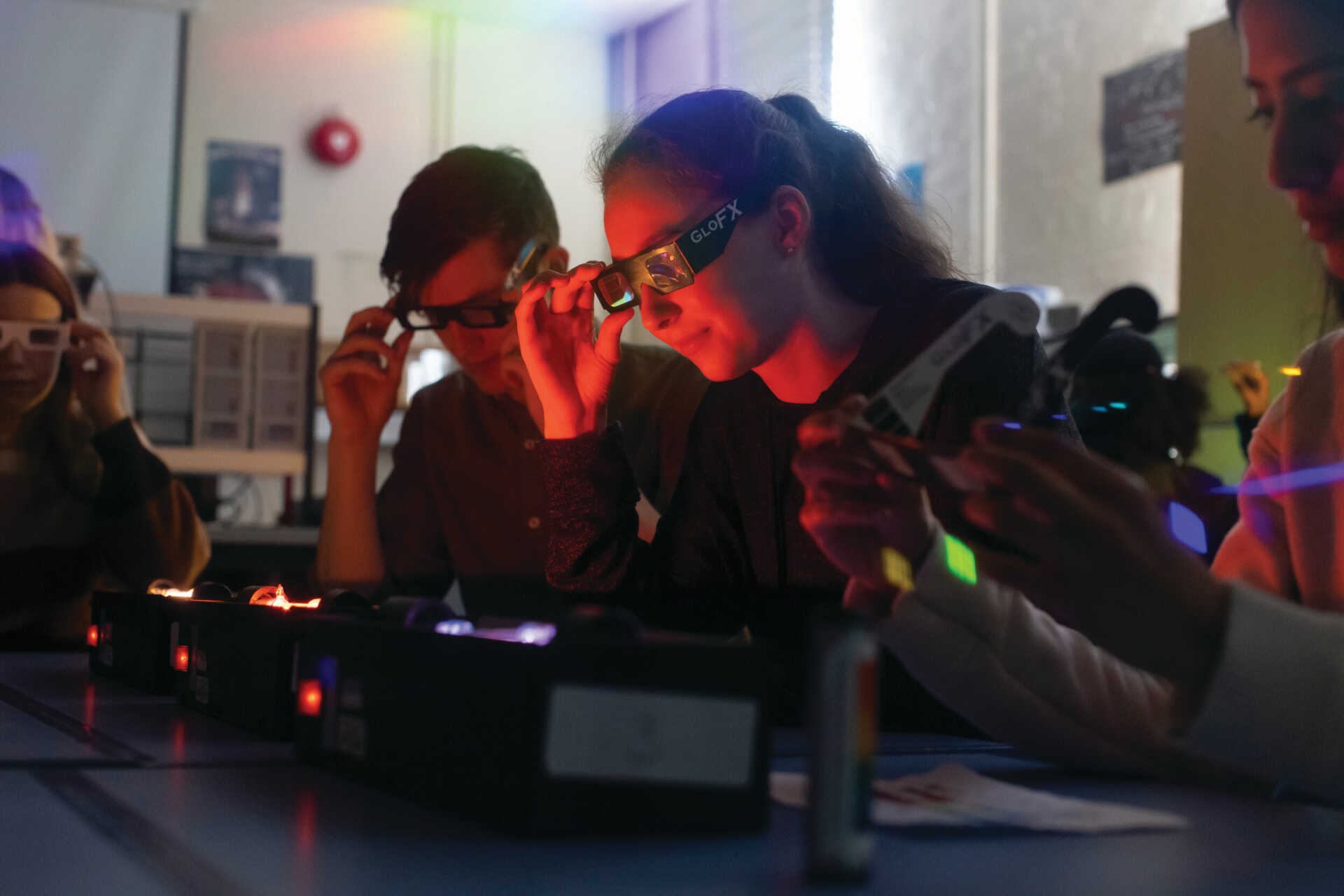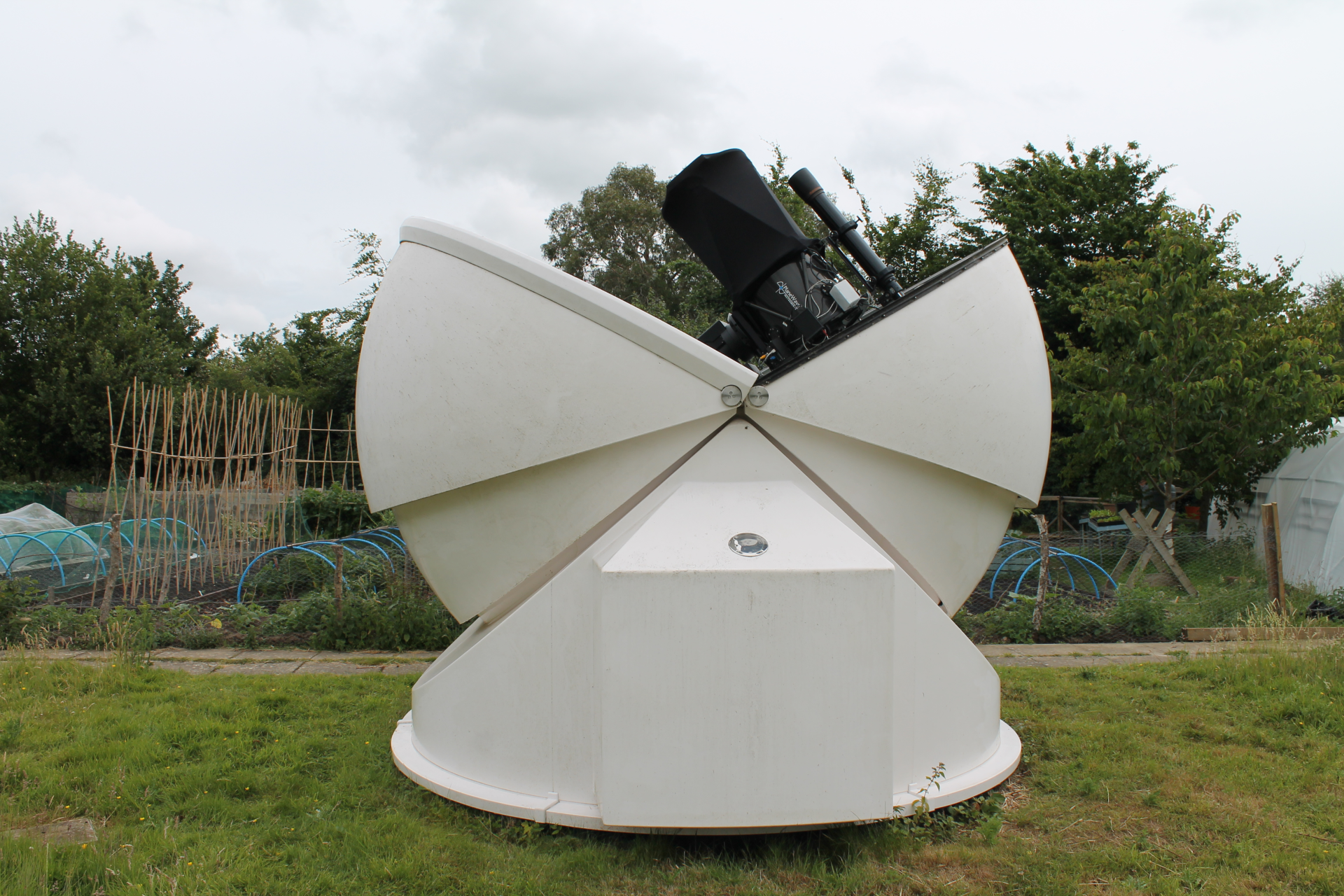
As an undergraduate student in Physics and Astronomy at Kent you will conduct a variety of experimental work in our recently-refurbished teaching laboratories.
You will gain hands-on experience of building and conducting scientific experiments, and develop the investigation skills needed for a range of technical and scientific careers. Final-year project work may also make use of our research facilities, including optical laboratories and the impact laboratory, where you will work alongside professional scientists.
Read more about our undergraduate and research facilities below.
In the Foundation and Stage 1 laboratories you will acquire the skills to carry out practical physical experiments, and gain experience using modern equipment such as data loggers, microcontrollers, and apparatus for materials analysis.
Our Stage 2 laboratory is equipped with more complex set-ups to allow you to repeat key physics experiments, such as Rutherford’s alpha-particle scattering and Millikan’s measurement of the fundamental charge.
Our Stage 3 Physics lab gives you access to modern equipment linked to our research strengths, such as optical interferometry and quantum communications experiments. The astrophysics laboratory makes use of data from the University’s optical telescope at the Beacon observatory, and you will have the opportunity to gain hands-on experience in observing. Open-ended project work in Stages 3 and 4 is conducted using industry-standard tools, such as microcontrollers and sensors, while 3D printing and workshop facilities allow you to prototype new experiments. Some experimental projects in Stages 3 and 4 will also make use of our research facilities.

We have dedicated laboratories for materials synthesis and analysis. This includes equipment for solid state synthesis and an extensive materials characterisation suite including x-ray diffraction and fluorescence spectroscopy, scanning electron microscopy, and Raman spectroscopy. We also operate a unique double-stage adiabatic demagnetisation refrigerator (dADR), used to study materials in the extreme quantum regime. The system can cool samples to ultra-low temperatures of 15 mK under highly-hydrostatic pressures of 50 GPa with magnetic fields up to 6 T and low noise sensitivity of 1 pV.
The Photonics Centre includes a suite of nine optical laboratories, a clean air room, and a workshop. The Centre is equipped with a range of lasers, including tuneable and ultra-broadband sources, specialist equipment for processing optical fibres, and a range of optoelectronic instrumentation. The Centre also houses imaging systems developed in-house, including optical coherence tomography and holographic microscopy, which are available for use by academic collaborators and industry.
Our Planetary Science research is supported by our Impact Laboratory which hosts the Light Gas Gun for investigating hypervelocity impacts. The gun is used to model impact events on large bodies in the Solar System as well as the effects of smaller, dust-like particles on artificial satellites. We also maintain the Astrochemistry and Origins of Life Laboratories as part of the Kent Early Earth Planetary Systems (KEEPS) facility.
Computational research is supported by the Tor cluster, a server configured as a resource for computational jobs too large for desktop computing, but not requiring the resources of major national high performance computing.
Our academics have a strong track record securing beam-time at large national and international accelerators and nuclear reactor-based facilities, including the Rutherford Appleton Laboratory, the Diamond Light Source, Atomki (Hungary), Astrid synchrotron (Denmark) and the Paul Scherrer Institute. We also participate in the planning and exploitation of Space and Ground-based Observational facilities within consortia, with telescopes spread across several continents.
Our facilities are available for use by researchers or industry and we are always keen to hear about potential collaborative projects with industrial partners. We also provide consultancy services to businesses. Contact the Knowledge Exchange and Innovation team to learn more. .